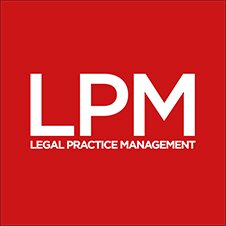Building strategy, Steven Treharne, Mogers Drewett Solicitors
This article was also featured as a column in the February 2016 issue of LPM. To read the issue in full, download LPM.
Without doubt, the biggest and first hurdle to overcome when strategically planning is to accept that lawyers (sometimes) find it difficult to deal with uncertainty, accept risk and support an intangible concept. But once you have them on board, how do you work out a solid business plan with specific objectives to develop competitive advantage?
There are many potential strategic paths to choose from, each can be argued passionately, and there is no way of ascertaining the right answer. But there are several steps firms can follow to create a strategic plan.
First, a detailed objective analysis of the environment is crucial – a Swot or Pestal analysis is always a good start. Harvard professor Michael Porter’s five forces analysis could be applied to legal thus: threats of substitute products, bargaining power of clients, threats of new entrants into the market, power of suppliers (such as cost of talent) and the internal rivalry squeeze within the profession itself. These can be used to produce a realistic assessment of the competition.
Another useful exercise is to undertake scenario planning, which requires creative contemplation of a number of futures for the legal profession. For example, what happens if the economy is dire for the next five years with no growth, or if new entrants flood the marketplace with cheap or well-branded legal services? An assessment should be made of how the business would cope under each circumstance and, more importantly, what it would have to do to survive and thrive.
Firms then need to position themselves by deciding which markets to compete in and how to compete. Which clients do we act for and which clients do we want to act for? What is our value proposition? Why would clients use us? What geographical area do we want to practise in? What services do we want to provide?
Next, work out your strategic capabilities. This part of the planning process is the reality check and it falls into two parts – a comparison of the relative strength of existing recourses compared to what is required to achieve positioning, and an analysis of the strategic importance of each capability against the required position. This process involves looking at tangible resources (finance, premises, IT) and intangible ones (human capital, client base, culture and values). A brutally honest assessment is imperative as it will help to produce a list of priorities and act as a reality check against what can be achieved. That said, the plan must remain ambitious.
The outcomes of the above process must be aligned with the culture of the firm. A change of strategy will require a change of behaviour by all in the firm. As Stephen Mayson warns: “There is a difference between strategic intent (what decision makers vote for) and strategic action (what they actually do).”
Structures and systems have to be put in place to encourage or force a change of behaviour. An underestimation of the time and energy required to achieve this will lead to failure.
There are many faces to the development of a business strategy, which require the acceptance of uncertainty and the consistent, fair and regular management of partners and staff. You must devise your strategy, assess the strategic importance and relative strength of the firm’s resources and capabilities, agree and police the rules – and give it everything you’ve got.



